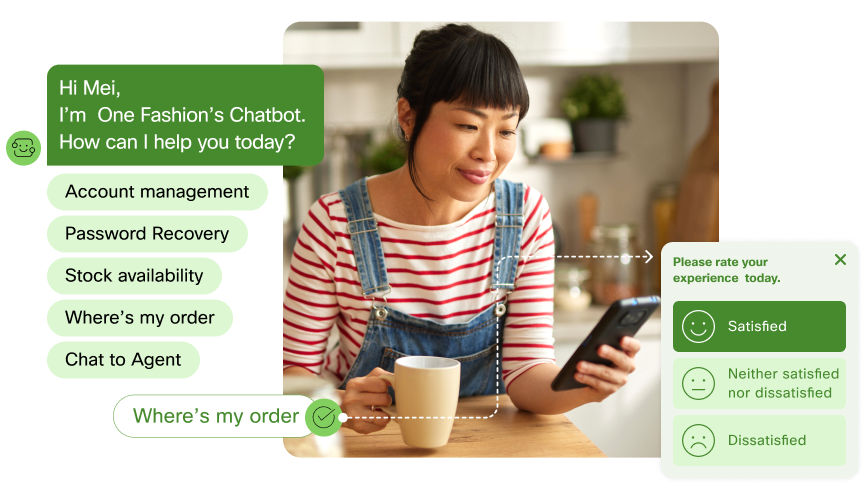Retail roundtable digest—four ways CPaaS is transforming the customer experience.
We invited eight leading retailers to discuss the connected customer experience. Here are the four biggest talking points.

Contents
Driven by rising demand for richer customer experiences (CX) that move seamlessly across the latest digital channels, the Communication Platform as a Service (CPaaS) market is experiencing rapid growth worldwide.
It’s inspiring to see, but there’s still work to be done to raise CPaaS awareness in the US retail sector, especially regarding its use in data management, omnichannel orchestration, and AI-powered automation.
So, to understand retailers’ CX challenges and opportunities, we invited representatives from eight leading US retailers for an exclusive dinner and roundtable discussion at the Ortus Club, New York.
In this article, we’ll unpack the four talking points that came through loudest at the event, and how CPaaS can help retailers seize the latest CX opportunities.
Talking point: Data integrity and management
Our roundtable participants emphasized the importance of data acquisition and cleanliness in delivering compelling customer journeys.
However, many said their organization lacked access to the actionable data they need to personalize interactions and automate chatbot conversations.
The best CPaaS solutions include pre-built and bespoke integrations that leverage and extend existing investments. This means you can integrate third-party partner services and backend systems—even legacy data sources—with the latest digital channels.
With CPaaS integrations, event and customer experience data can move seamlessly between transaction systems and centralized data repositories, empowering everyone who needs to can visualize and access the data to design and refine meaningful customer journeys from a single source of truth. For example, you could use e-commerce engagement data to trigger abandoned cart reminders, or third-party logistics data to send real-time updates as orders move through the supply chain.
And because this data is exchanged both ways, every interaction contributes to a clearer picture of the customer and your business, so you always have a reliable source of real-time insight.
Talking point: Customer experience ownership
Our attendees debated whether a single individual or everyone must take ownership of CX success. Despite a range of views, everyone was united by a genuine drive to achieve customer-centricity—and that’s where CPaaS can help.
CPaaS solutions can democratize data and CX design – letting non-technical users, including customer-facing staff, build personalized experiences that drive growth and brand loyalty.
Drag-and-drop journey builders make it easy to capture and integrate data from different sources, test and predict outcomes, and orchestrate contextual interactions. This includes pre-built nodes for the latest digital channels and reusable templates so everyone can share their most successful configurations.
Marketing teams can use CPaaS journey builders to personalize offers, trigger promotions based on customer actions, and manage their consent. And CPaaS helps contact center agents deflect incoming calls by proactively fielding anticipated queries—like alerting customers of delivery delays due to seasonal traffic in affected areas.
Whatever the scenario, your CPaaS solution should allow everyone to contribute to CX improvements and solve issues with minimal IT effort or performing complex coding.
Talking point: Conversational AI
Despite AI’s promise of improved efficiency and enhanced automation, our roundtable discussion revealed a shared hesitance to make the first move in using the technology and uncertainty around its practical use cases in retail.
With that said, many of those we spoke to have formed tiger teams and allocated budget to AI exploration. And the good news is that some CPaaS solutions include pre-built AI automation tools, including chatbots to enable customer self-service, share timely updates, and improve call deflection.

By letting customers self-serve using chatbots, you can streamline simple requests, reduce the cost to serve, and deflect routine calls to free up more human agent time for value-adding tasks.
With a chatbot customers can get:
Store opening times
Check stock availability
Account support
Delivery options
Initiate returns
With the right integrations, you can even let customers purchase goods and services in-channel by responding to a personalized offer orchestrated by your marketing team.
Retailers are also using generative AI to drive operational efficiency. If a customer’s inquiry is too complex for the chatbot, generative AI can summarize the transcript to brief human agents on the situation at the point of handover. Plus, in-store teams can use chatbots to query shift scheduling, payroll, and task allocations to help them stay organized.
Talking point: Omnichannel adoption
The final talking point focused on the digital channels customers use today and the emerging tactics retailers can use to drive engagement and nurture brand trust.
Awareness of emerging messaging channels such as Rich Communications Services (RCS), Apple Business Messages, and Branded Text was low among attendees. However, they recognized the benefits of using RCS and Apple messaging to meet customers where they are with richer, more dynamic interactions.
There are now more than 1.1 billion active RCS users, and with Apple supporting RCS later this year that number will likely grow significantly. RCS lets brands engage customers directly in live, app-like conversations in their device-native inbox.
By connecting RCS with back-office systems, you can orchestrate two-way interactions that strengthen customer relationships, including the AI-powered use cases we’ve already explored. And unlike SMS, you can embed high-resolution images and video, contextual buttons that provide app-like navigation, offering a smoother, more interactive and intuitive customer experience.
Verified checkmarks and official branding strengthen brand identify, making RCS and Branded Text an ideal way to counter phishing and build customer trust when sharing personal information like refund or embedded finance updates.
And with an enterprise-grade CPaaS solution, adding RCS, Apple Business Messaging and Branded Text to your messaging toolkit is as easy as flipping a switch.
Learn more about CPaaS for joined-up customer interactions
Huge thanks to the representatives who took the time to share their views with us at the event. It’s an exciting time to be a retailer, and with a CPaaS platform like Webex Connect it’s never been easier to orchestrate unforgettable experiences that turn curious shoppers into life-long brand ambassadors.
To learn more about what Webex Connect can do to help you elevate your brand communications, please get in touch.



